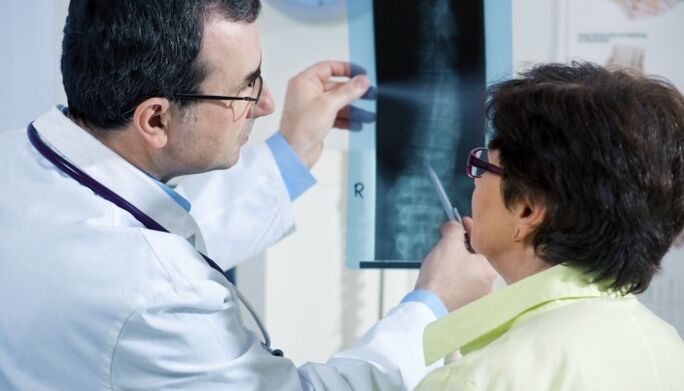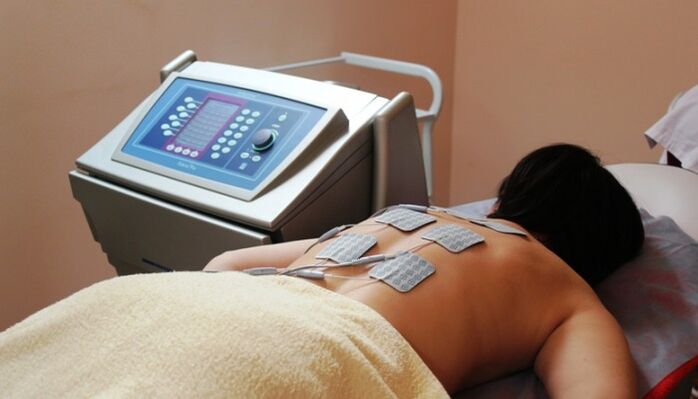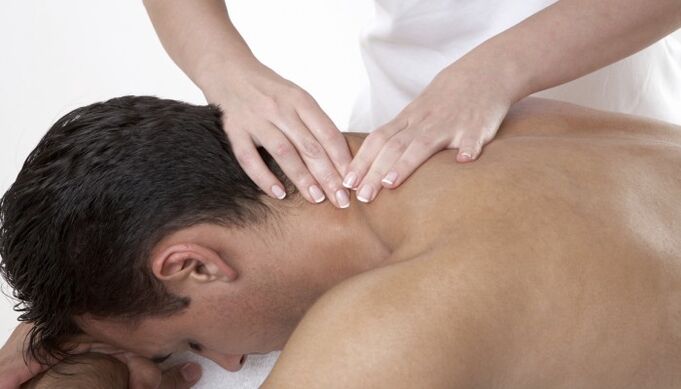Osteochondrosis is a chronic pathology of the spine caused by degenerative changes in the intervertebral disc. As the disease progresses, other structures in the spine are also involved in the pathological process — vertebral bodies, intervertebral joints, ligaments, and so on.
The disease affects all ages. Until recently, osteochondrosis was among the elderly, but there has been a recent increase in the incidence of the disease among the young. Both women and men are often ill.
Why does osteochondrosis occur?
In order to better understand what osteochondrosis is, it is necessary to briefly identify the causes and mechanism of its occurrence.
In osteochondrosis of the spine, pathological lesions develop slowly. It often takes years from the onset of the pathological process of intervertebral cartilage to the onset of the first symptoms of osteochondrosis.
Causes of osteochondrosis
The health of the spine is directly affected by a number of negative factors. If they act for a long time, pathological changes in the structure of the spine appear as a result. And this contributes to the development of osteochondrosis.
For example, osteochondrosis is well known to overweight people with inactive lifestyles. Excessive physical activity, back and neck injuries, and some somatic diseases can also lead to this pathology. Aggravated inheritance and old age are direct factors that lead to the development of degenerative damage to the cartilage tissue of the cartilage discs.
How does osteochondrosis develop?
The mechanism for the development (or pathogenesis) of osteochondrosis is still controversial and insufficiently studied. It is most likely that this disease develops on the basis of metabolic disorders in the structure of the spine.
Adverse factors often result in irreversible changes in the cartilaginous tissue of the intervertebral disc, followed by its gradual destruction (or destruction).
The pathological process then spreads to the bone tissue of the vertebrae with its deformation and irreversible changes in the surrounding structures.
The appearance of such modifications in the intervertebral disc depends directly on its anatomical nuances:
- Cartilage tissue does not have its own blood supply system. It is nourished by the bone tissue of the adjacent vertebrae. Therefore, cartilage nutrition also suffers from circulatory disorders due to insufficient or, conversely, excessive physical exertion to the spine.
- There are also no nerve fibers in the cartilage. Consequently, in the case of functional overload of the intervertebral disc, the transmission of the nerve impulse that triggers the activation of the metabolism will not be timely.
- The ability of the intervertebral disc to self-heal (regenerate) slows down due to its structural features.
There are other factors that clearly contribute to the development of degenerative processes in the cartilage tissue of intervertebral discs and the development of osteochondrosis.
Stages of pathological lesions
Based on current data on the pathogenesis of the pathology, several stages of the degenerative process in the intervertebral disc can be conditionally distinguished. Stages of spinal osteochondrosis:
- Basic. The cartilaginous tissue of the disc undergoes structural changes due to mechanical effects - a malfunction occurs. The surface of the plate is characterized by the appearance of cracks of different sizes and depths. These cracks then turn into protrusions (hernias).
- Intermediate. It is characterized by instability of the affected area of the spine due to pathological mobility of the vertebrae. In this case, one of the main functions of the spine, the protective function, is disrupted. The nerve and blood vessels running in your bone canals become vulnerable. Vivid clinical signs of the disease develop.
- Finite. The affected cartilage tissue is replaced with coarser and denser fibers. However, the intervertebral hernias disappear. And the pathological mobility of the vertebrae is replaced by a sharp restriction on their mobility. Often, the spinal canal narrows with manifestations of compression of spinal cord segments.
Therefore, each stage of the disease is characterized by the presence of its own specific symptoms, which undoubtedly play a key role in the choice of treatment methods for osteochondrosis.
Clinical manifestations
Signs of spinal osteochondrosis appear as changes in the bone tissue in the vertebrae. The patient may not complain for a long time.
The disease is characterized by a chronic course, the stages of exacerbation and remission alternating.
Exacerbation of osteochondrosis is often caused by provocative factors: physical overload, hypothermia, prolonged discomfort, such as in a dream or at work, and so on.
There are a number of symptoms of this disease that depend on the localization of the pathological process and the severity of structural changes in the cartilage and bone tissue. All of these symptoms can be classified into several syndromes. They are combined quite often.
radical syndrome
It occurs in almost all patients with osteochondrosis of the spine. Compression of the roots of the spinal nerves by pathologically altered structures of the spine plays a role in the onset of this syndrome.
The main symptom of radicular syndrome is pain, which in most cases can spread during the innervation of the corresponding root (irradiation). It is characterized by pain radiating from the top down. For example, if the lumbar region is affected, the buttocks will hurt and give to the foot.
The intensity of the pain increases with rotation of the torso or neck with physical activity. Feelings of pain are characterized by cutting, pulling and baking.
In addition, along with pain syndrome, the affected area often develops symptoms of sensitivity violation according to the type of growth (hyperthyroidism), as well as sensitivity disorders, numbness.
If the disease progresses and the cause of the compression does not go away, the hypersesthesia is replaced by hypoaesthesia (a decrease in sensitivity), which is often accompanied by symptoms of loss of function of the affected spinal root.
spinal syndrome
This syndrome is caused by compression of the spinal cord. The most common cause of such compression is intervertebral hernia.
Sensitivity, reactions to temperature and pain stimuli are decreasing. Progressive muscle weakness develops in both the limbs and the trunk. Paretic or paralytic symptoms often develop.
Vegetative vascular syndrome

This syndrome most commonly develops in the cervical and cervicothoracal localization of spinal osteochondrosis.
In osteochondrosis, vascular disorders are caused by reflex convulsions or mechanical compression of large blood vessels passing through the bone canals of the spine. This can lead to a variety of symptoms, reminiscent of ischemic circulatory disturbances in the main arteries of the brain or limbs. This is often the cause of diagnostic errors.
In addition, various vegetative disorders often develop. They are most pronounced in women (emotional lability, sleep disturbances, menstrual disorders, etc. ).
visceral syndrome
It is characterized by the occurrence of pain in the projection of the heart, in the organs of the gastrointestinal tract, etc. Such patients are often treated for a long time and with complete failure due to any somatic disease.
For example, if the chest region is affected, there may be pain behind the sternum that is similar to those with angina pectoris. A reflex-like feeling of a heartbeat often occurs.
Diagnostic principles
In addition to the characteristic symptoms, other examination methods - spinal X-ray, computed tomography and magnetic resonance imaging - play an important role in determining the disease and its stage.
Other methods are reported to be performed, such as EEG, ECG, vascular Doppler scan, and so on.
Treatment of osteochondrosis

Therapy for spinal osteochondrosis is an integrated approach. When selecting one or the other method of treatment, the extent of damage to the structure of the spine, the nature and severity of the clinical manifestations and the stage of the disease (exacerbation or remission) should be assessed. .
Preventive measures to reduce the incidence of disease progression and to preserve the structure of the vertebrae and intervertebral discs also play an important role in the treatment of osteochondrosis of the spine.
Tactics during exacerbation
An important condition for the treatment of the disease during this period is the establishment of rest in the affected area of the spine. To do this, the patient is prescribed bed rest using various means to create immobility in the affected vertebral segment.
In some cases, hospitalization is required in the neurology department.
Medical treatment
Various medications are prescribed to reduce the intensity of pain in osteochondrosis:
- non-steroidal anti-inflammatory drugs (NSAIDs);
- painkiller;
- muscle relaxants.
In the absence of the effect of their application, it is advisable to block the innervation of the affected area by using local anesthetics.
With the localization of the neck in osteochondrosis, circulatory disorders of the brain often develop. To reduce such manifestations, medications are prescribed that improve cerebral blood flow. It is also necessary to use symptomatic treatments - alleviation of nausea and vomiting, correction of vestibular disorders, etc.
In addition, it is advisable to prescribe vitamin preparations (especially group B), antioxidants and some.
Physiotherapy procedures

Treatment with osteochondrosis with physical agents has found wide application. Various physiotherapy methods are used in both the exacerbation and remission stages of the disease:
- In the acute period, ultraviolet radiation, electromagnetic field (UHF) treatment, diadynamic current, etc. are used.
- In the remission phase, electrophoresis with various drugs, inductothermia, ultrasound, and various balneotherapy are prescribed.
Tactics in the remission phase
Once the acute manifestations of the disease have subsided, treatment of the disease continues. The goal of such therapy is to reduce the frequency of exacerbations and to promote the regeneration of bone and cartilage tissue in the spine.
The prescribed medication in the acute phase of the disease continues. Chondroprotectors can be used during this period - agents that improve the condition of the cartilage.
In addition to physiotherapy methods, massages and physiotherapy are also used.
Massage

The main effect of massage is to improve blood circulation and strengthen the muscle band in the affected area. In addition, the professional performance of massage movements makes it possible to alleviate the muscle cramps that usually accompany this pathology.
This is why the massage should be performed by a specially trained professional who is fluent in this method of treatment. Improper or illiterate massage can lead to complications or worsening of the disease.
Therapeutic practice (LFK)
Dosed and specially selected physical exercises are the basis of movement therapy. The complex of such practices is selected by the physician for each patient. The principle of selecting training therapy practices is to reduce the physical strain on the affected area of the spine.
The aim of physiotherapy exercises is to improve the blood supply and lymph flow in the affected area and to strengthen the muscle tissue.
These exercises should be done every day. Usually, individual or group lessons are held with the instructor at first, and then the patient can do a series of exercises on their own at home.
Prevention of exacerbations
Measures to prevent the worsening of osteochondrosis of the spine are aimed at eliminating all provocative factors:
- Proper posture and posture monitoring is required during prolonged standing and sitting.
- In the event of prolonged static stress (such as working in front of a computer), it is helpful to take regular breaks during warm-up or a series of exercises recommended by your doctor.
- Hypothermia should be avoided.
- It is important to get proper sleep in osteochondrosis, to provide a place to sleep - a mattress and a pillow. Ideally, they should be orthopedic.
- Reduction of obesity and timely correction of concomitant somatic and endocrine pathology is mandatory.
And when the slightest symptoms of spinal disease appear, you should not delay your visit to the doctor. After all, the earlier you start treating your spinal osteochondrosis, the better your results will be.














































